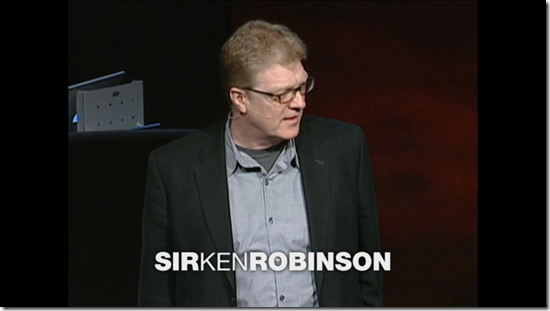The Most Popular TED Talk Of All Time
Sir Ken Robinson—an English education expert—delivered the most popular TED Talk ever in 2006.
In the eight years since, his talk called “How Schools Kill Creativity” has accumulated more than 27 million views. That’s about the same number of people who watched last year’s Grammy Awards, meaning that Ken Robinson—a relative unknown who stood on a stage in front of a few hundred people—has attracted the same number of views as performances by Justin Timberlake, Rihanna, Elton John, Sting, and Jay-Z. Not bad for a speech about education.
Whether or not Mr. Robinson’s speech is the best TED Talk of all time is subjective—but however you answer that question, it’s clear that he delivered a terrific talk.
This post identifies five reasons Robinson’s speech succeeded—and what you can learn from it.
1. His Theme Was Unambiguous
Mr. Robinson delivered his thesis statement early in his talk by saying, “My contention is that creativity now is as important in education as literacy, and we should treat it with the same status.” Everything that followed supported that theme—his stories, statistics, quotes, and other personal observations.
2. He Supported His Theme With Compelling Stories
Robinson is a master storyteller. His story about Gillian Lynn, who choreographed Cats and The Phantom of the Opera, is likely to stick with me for a long time. As a child, Robinson explained, Lynn was sent to a childhood specialist to diagnose her inability to sit still. The brilliant doctor turned on the radio, observed the young Ms. Lynn, and left the room to offer her mother his diagnosis: “Gillian isn’t sick. She’s a dancer.” His story roused my emotions, both anger (for the children who are misdiagnosed) and hope (that misunderstood children will be understood more completely).
3. He Concluded His Talk With Context
During the body of his talk, Robinson effectively made the case for creativity in education. He could have ended his talk successfully by simply reiterating that point, perhaps through an illustrative anecdote (the Gillian Lynn story could have served as a memorable close). Instead, he set his aims even higher, tying his talk into every other TED Talk that the live audience had seen or was about to see: “What TED celebrates is the gift of the human imagination. We have to be careful now that we use this gift wisely and that we avert some of the scenarios we’ve talked about.”

4. His Tone Was Conversational
Public speaking coaches always advise their trainees to appear “conversational.” Robinson demonstrated perfectly what a conversational and relaxed tone looks like. I’ve written before about mirror neurons, which can allow speakers who exhibit a certain tone to create that same tone and feeling within their audiences. It’s easy to imagine oneself being put at ease immediately through Robinson’s easy demeanor.
5. He Used Humor As a Vehicle
Robinson is funny. At first, I wondered whether his humor—which occasionally veered slightly off message—bordered on overkill. But as I continued reflecting on his speech, I realized why it worked so well. A talk about a topic like education can easily become strident. Robinson used humor as a vehicle to open up the audience, create a personal bond, and convey his message without making anyone feel defensive. He has the ease of an experienced stand-up comedian—which most speakers do not—and he used that gift to sell his vision to an increasingly receptive audience.



Brad,
You are correct, this is a great TED Talk. The best ever? Subject to personal opinion and lots of it.
I watched this years ago and its message still resonates with me. Until you mentioned it, I had forgotten about the Gillian Lynn story but that feeling of hopelessness for all of the other misdiagnosed and misunderstood children out there is what keeps me asking the how questions. How can we make a difference? How can I help?
In addition to the five keys you listed above, that is why it is such a great talk.
Kristin,
I completely agree. Out of everything Robinson said in his 18 minutes, his story about Lynn is the piece that will linger with me the longest. It’s a great example of how an individual case study can make the big picture immediately clear.
Thanks for reading!
Brad